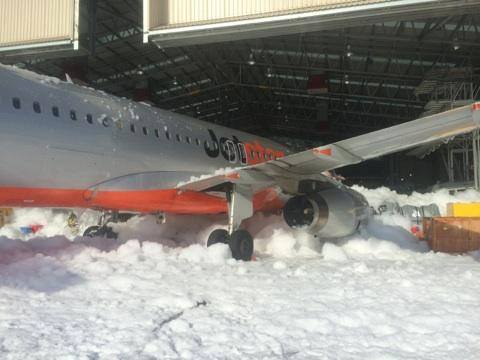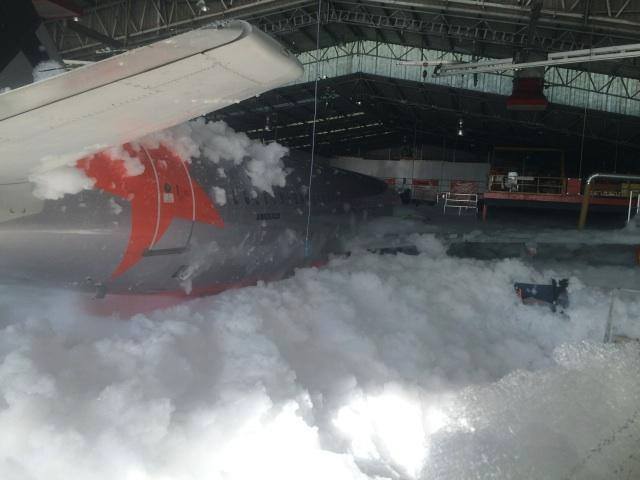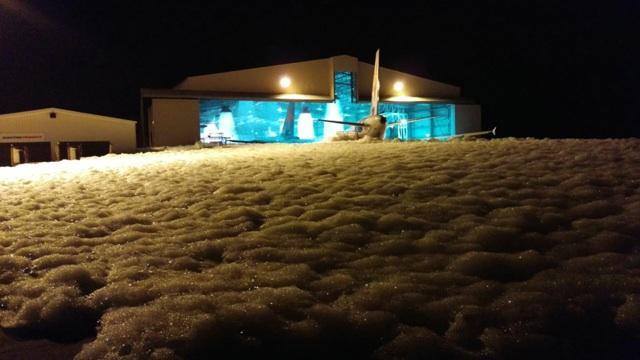Photos have emerged of a mishap that damaged two Jetstar A320s at its Newcastle maintenance facility on April 23, during the storm and flooding crisis that crippled much of eastern New South Wales.
The single-aisle jets were buried under foam when a fire suppression system was triggered inside the hangar housing them, with the photos of unknown origin now posted here on Facebook.
Jetstar believes the incident was storm related, and that the damage isn’t substantial. Nevertheless, neither aircraft has been returned to service a week later and a spokesperson says the damage is still being assessed.
That could amount to more than 100 flights already lost, depending on what assumptions are made about their intended deployment during this period.
This mishap follows the prolonged grounding of a Qantas A380 earlier this month because of a screw-up in maintenance at its Sydney facility. The jet slipped off a jack and damaged (according to some sources, very seriously damaged) a horizontal stabiliser and perhaps other parts of the airframe at the rear of the jet.
Taken together, these are expensive incidents for the airline in one month in terms of lost revenue as well as remedial costs. The temporary loss of one of Qantas’s 12 A380s puts an already stressed fleet under more pressure, relieved in part by using one of its fleet of 12 Boeing 747-400s to cover for A380 cancellations on the Sydney-Los Angeles route.
The incidents have also given rise to some interesting direct communications from people in Qantas.
Some of them express alarm at the manner in which the airline is pushing its operations to levels of utilisation that it is claimed are inconsistent with the highest standards of maintenance and the schedule reliability that this delivers.
However, those concerns are significantly countered (although in notes received prior to these incidents) by those who say management has at last broken through a culture of under-utlilisation of assets, human and mechanical, which will combine with the benefits of lower fuel costs and massive sackings to make Qantas a truly profitable enterprise.
Listening to these opposing claims is an uncomfortable experience. The A380 debacle suggests that there is some mythologising going on when it comes to claims made about the uniquely impeccable quality of in-house Australian-based maintenance procedures, while some of the countervailing arguments seem to flirt with unintended consequences if the drive for efficiency loses touch with operational realities.
Having an A380 removed from service and subject to undoubtedly highly costly repairs is a shocking outcome for what should have been routine maintenance.
That said, let’s hope — if not trust — that Qantas will get the underlying contest between higher efficiency and legendary excellence in engineering and maintenance right, whatever mishaps nature might deliver to it.











How does fire suppression foam cause damage to planes designed to fly through thunderstorms ?
This is what happens when you outsource aircraft maintenance to dodgy facilities in Asia and penalise the best, most talented, most dedicated, most experienced aircraft engineers in the world who of course work for Qantas in Australia.
I mean, Sydney and Newcastle are in Asia aren’t they? They have to be! Don’t they?!?